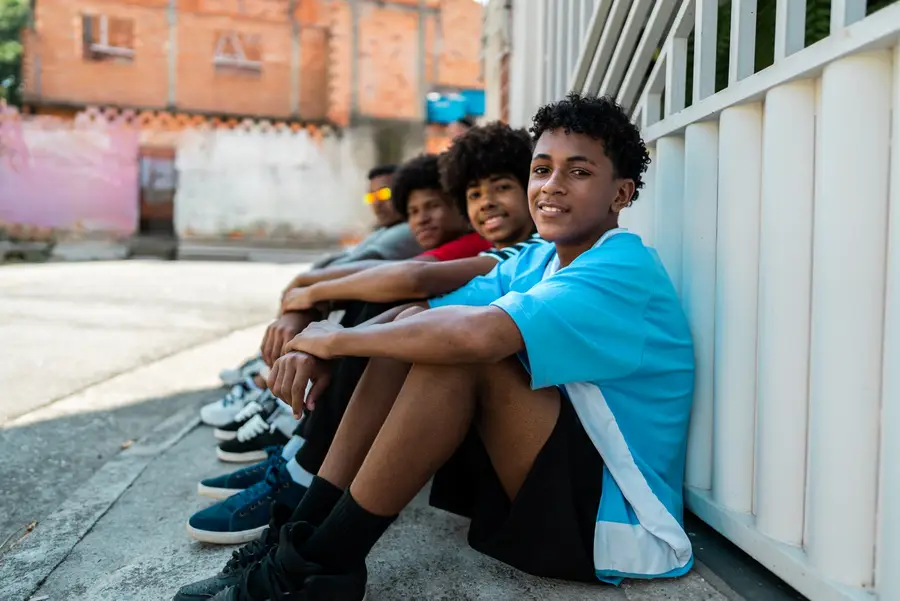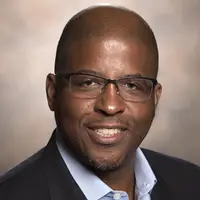
Addressing substance misuse and violence among boys and young men of color, as well as in adolescents in other diverse communities, requires more than a one-size-fits-all approach. Culturally responsive and context-specific interventions are essential to tackling these issues in a way that reflects the unique experiences, values, and resources of each community. We sat down with prevention scientist Phillip Graham to discuss how these tailored strategies can create lasting, equitable change across different populations.
This week, Dr. Graham is being honored as the Penn State Prevention Research Center's 2024 Bennett Lecturer in Prevention Science, where he will present two lectures focused on conducting community-based research and culturally-responsive healing practices for boys and young men of color.
What inspired your focus on preventing adolescent violence and substance misuse?
My focus on adolescent violence and substance misuse prevention stems from witnessing firsthand the profound effects these issues have on young people, particularly those in marginalized communities. Early in my career, I saw how violence and substance misuse intersect with systemic inequities, disproportionately affecting young people of color. This was particularly true in the early 1990s when interpersonal violence among black males was at an all-time high.
I’ve always believed in the potential of youth, and it became clear to me that by addressing these issues early, we can help adolescents thrive. My work has focused on using research to not only understand these challenges but also evaluate interventions that provide the support young people need to overcome them.
What unique challenges do boys and young men of color (BYMOC) experience and why?
Boys and young men of color face unique challenges shaped by systemic inequities and structural racism. They are often subjected to negative stereotypes, which contribute to their marginalization in education, employment, healthcare and most often in the criminal justice system.
This dehumanization manifests in higher rates of school suspensions/expulsions, arrests, lack of access to mental health services, and deadly encounters with law enforcement. Additionally, they are frequently exposed to violence (as victims and perpetrators), whether in their neighborhoods or schools, and struggle with internalized narratives about their worth. These challenges are complex and require interventions that are both culturally responsive and grounded in the realities they face daily.
How does centering the voices of BYMOC change how we approach youth interventions? What are some successful interventions that have developed as a result?
Centering the voices of BYMOC shifts the focus from seeing them as problems to be fixed to understanding them as individuals with unique experiences and strengths. This approach leads to the creation of interventions that are more relevant, trusted, and effective.
One successful intervention is culturally responsive mentorship programs, where young men of color are paired with mentors from similar backgrounds who can relate to their experiences. Another example is restorative justice programs in schools, which focus on healing rather than punishment. These interventions have shown positive outcomes in terms of reducing recidivism and increasing engagement in education. And I would be remise if I did not reference Forward Promise which is an initiative dedicated to address the traumatic impact of dehumanization on the lives of youth of color.
Your work emphasizes context when conducting community-based research. Why is context important?
Context is critical because it shapes how issues like violence and substance misuse manifest in a community. Each community has its own unique set of cultural, social, and economic factors that influence both the problems and the solutions. Understanding the context ensures that interventions are culturally appropriate and meet the specific needs of the population. For instance, what works in an urban environment may not be effective in a rural one, or the same intervention might need to be adapted to reflect the community’s cultural values.
My work has always emphasized listening to the community and tailoring research and interventions to their context for lasting impact. Emphasizing context also manifests in our analytic approaches with the emergence of implementation science as a critical component to understanding the most effective strategies to the delivery of evidence-based interventions.
How do you adapt research methodologies to diverse communities?
Adapting methodologies involves engaging the community as partners in the research process. I use approaches like community-based participatory research (CBPR), where community partners contribute to shaping the research design and implementation. This ensures the research is relevant and respectful of cultural differences. For example, when working with diverse communities, we may adjust survey questions to reflect local norms or use qualitative methods like focus groups to capture the full range of experiences that quantitative methods might miss. Flexibility and collaboration are key to ensuring that the research is both inclusive and effective.
How is prevention science evolving to better serve marginalized communities?
Prevention science is evolving by becoming more inclusive and equity focused. There’s a growing understanding that traditional approaches often overlook the structural and systemic factors affecting marginalized communities. As a result, we’re seeing more efforts to address the root causes of violence and substance misuse, such as poverty and racial inequities.
Additionally, there is a greater emphasis on involving communities in the design and evaluation of interventions, ensuring that programs are culturally responsive and sustainable in their original design. In my own work, I’ve seen how partnerships with local organizations and stakeholders can lead to more impactful and long-lasting outcomes for marginalized populations.
